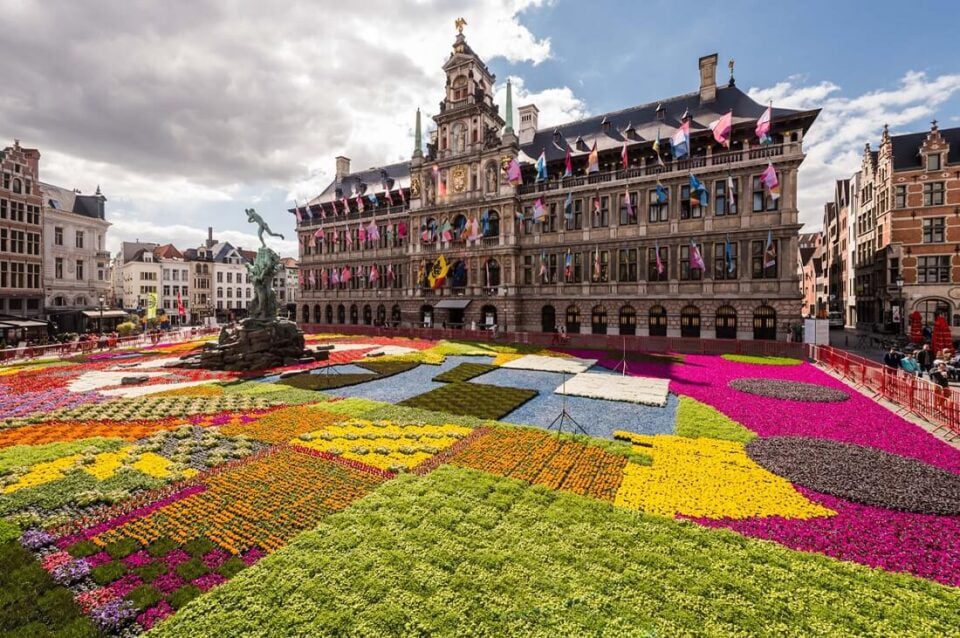Today, we are set to visit one of Belgium’s most famous cities – Antwerp. It is worth noting that the place is renowned for its diamond cutting masters and has recently been recognized as one of the places where the best designer clothing in the world is produced. But its fame and significance do not end there. Even the most demanding tourist will be impressed by its attractions, immerse themselves in unique architecture, and acquaint themselves with local traditions that can be called unique without exaggeration.
Legends and Myths
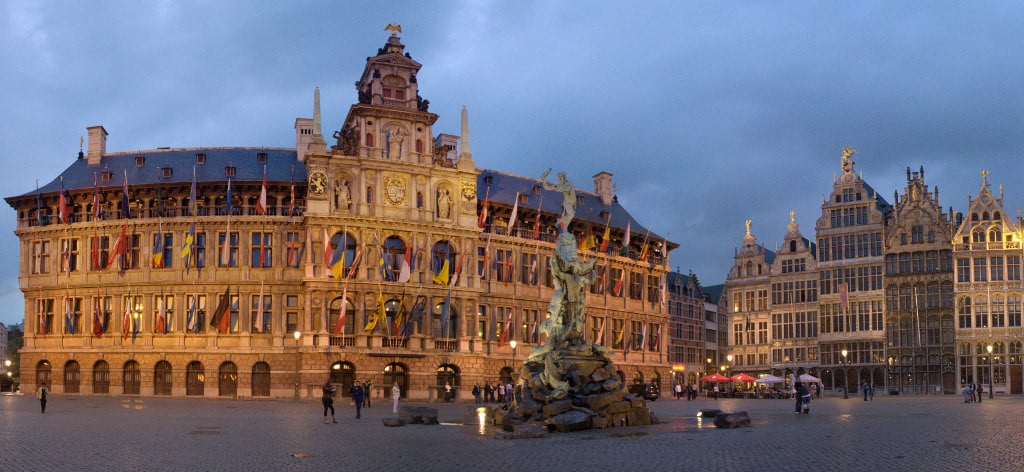
According to one local myth, control over the river on which Antwerp is situated was held by an evil giant. He demanded an exorbitant fee from every traveler for the right to continue their journey here. If payment was not received, he would cut off the hand of those who refused. This continued until a brave Roman managed to defeat the giant. The giant’s severed hand, which the hero threw into the river, gave the town its unusual name.
If we set legends aside, we can find a reasonable explanation for the name. In the local dialect, “aanwerp” means an alluvial hill on which the city walls were built. The first mentions of it date back to the distant times when the influence of Gallo-Roman tribes spread over the land. By the 7th century, the first fortifications could be seen here, helping to withstand the fierce onslaught of invaders. In history, there are many bright spots and memorable dates, and many names are associated with this place in Belgium. But we will not delve into it.
Grote Markt Square
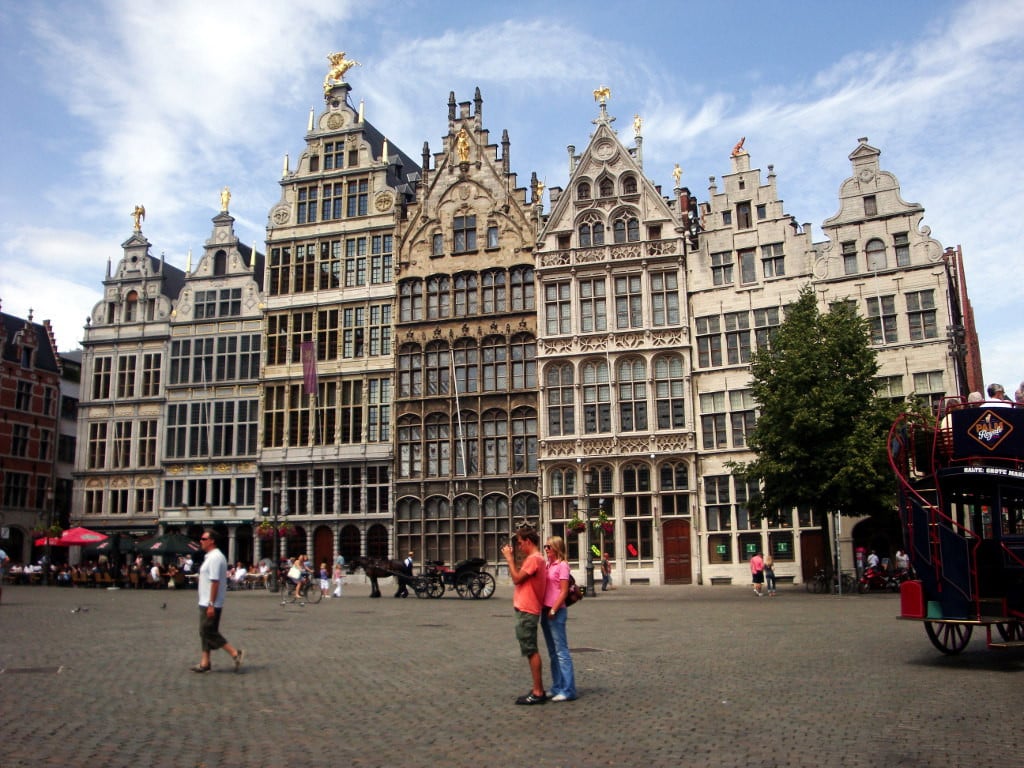
One of the city’s most impressive attractions, visited by thousands of tourists from around the world every year, is the Grote Markt Square. This place is steeped in centuries of history. The most significant events took place here. The square is surrounded by unique architectural structures, the beauty of which any place on the planet can envy. Grote Markt was built in the distant 16th century and has preserved its amazing beauty and enchanting uniqueness to this day. The incomparable fountain in the center, which presents tourists with the image of the legendary Roman who ended the tyranny of the fierce giant, is worth mentioning.
Silvius Brabo stands forever with the giant’s severed hand raised in victory. This place symbolizes the beginning of a new era in Antwerp. Here, you can also admire the ingenious town hall, recognized as one of the most striking architectural masterpieces in Europe at that time. The building captivates with its unusual and rare combination of two architectural styles – Flemish Gothic and Italian Renaissance.
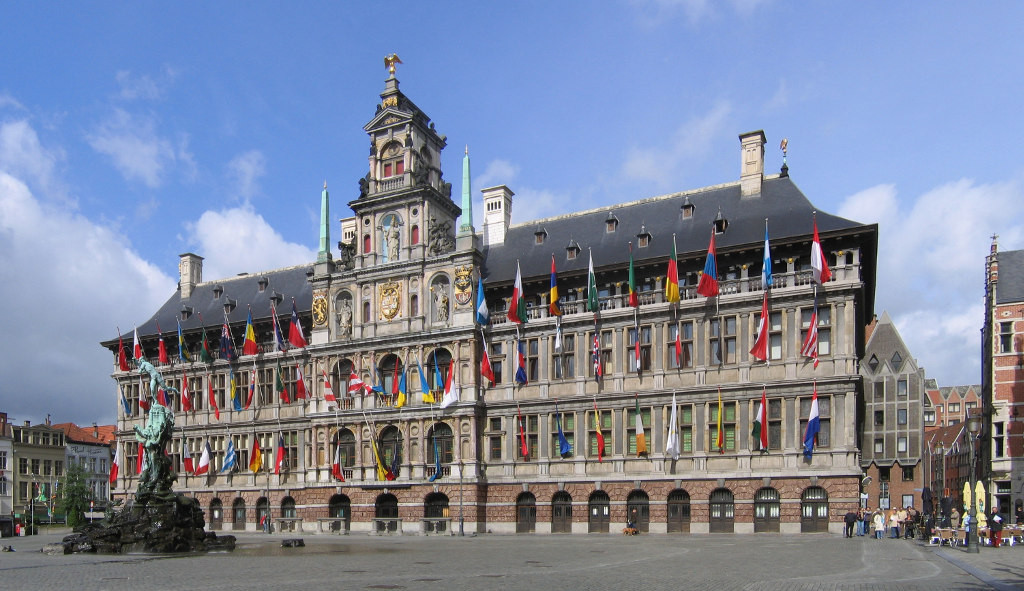
Looking north of Grote Markt, one can see an equally enchanting view of the richly decorated guild houses adorned with pure gold statues and the Cathedral of Our Lady, made in the best Gothic traditions. Just imagine, the construction of the cathedral lasted two long centuries!
Steen Castle
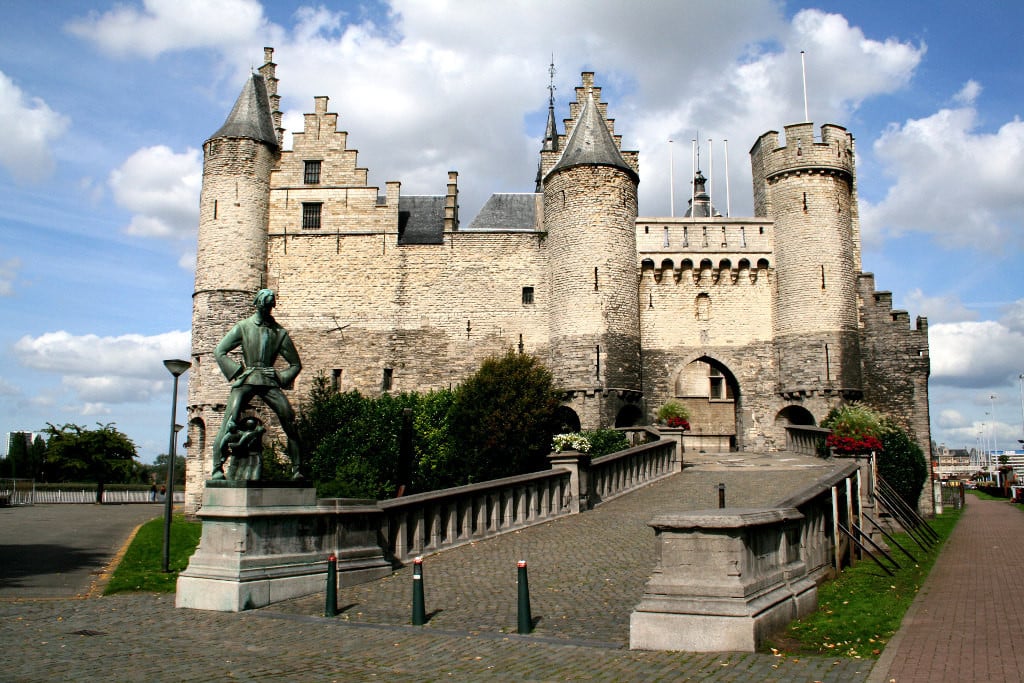
Located in the very center, it represents a monumental architectural monument. Construction began as early as the 9th century. The stone walls have witnessed many events over the years! Initially, the castle was the estate of one of the main leaders of the Crusades – Godfrey of Bouillon. Later, the spacious halls were occupied by municipal representatives, and a few years later, it became the main center of the Inquisition. In the dungeons, harsh sentences were carried out, severing ties with all heretics, dissenters, and even witches.
Today, the castle has turned into a real Maritime Museum, granted National status. Here, you can see the ingenious sculpture dedicated to one of the main heroes of local tales and children’s horrors – Lange Wapper. He had the unique ability to change his appearance, transforming into either dwarfs or giants, scaring naughty children.
Cathedral of Our Lady in Antwerp

To appreciate the cultural, religious, and historical significance of the Cathedral of Our Lady in Antwerp, be sure to include a visit to this place in your tour plan. Just think, according to the absolute majority of experts and historians, the cathedral is a true monument of medieval culture and is one of the most impressive churches of the Catholic Church. It is no wonder that it is recognized as another symbol of modern Antwerp and is the tallest religious building in Belgium.
Its height reaches an astounding 123 meters. Today, the cathedral serves another purpose. For some time now, its grand halls have housed the most impressive works of master painters such as Rubens, van Veen, Jacob de Backer, and Marten de Vos. Special attention is required for the pair of massive organs, the most impressive of which is over 130 years old and spans three floors!
Butcher’s Hall

While in Antwerp, it is worth visiting another impressive architectural landmark – the Butcher’s Hall. Its facade is framed by a successful combination of red brick and white stone. From a distance, it looks very much like a piece of appetizing bacon, hence the name. Every inch of the Hall is captivating. There is the mysterious shimmer of glass, the pointed roof protrusions, and the rich decoration of rare natural materials.
In its time, the Butcher’s Hall emphasized the status and wealth of a privileged merchants’ guild. The upper floors once hosted secular events open only to the chosen few. Today, anyone can visit this place, as it houses a brilliant museum of archaeology, history, and applied arts. One of the most impressive weapon collections from various times is gathered here.
World Diamond Center
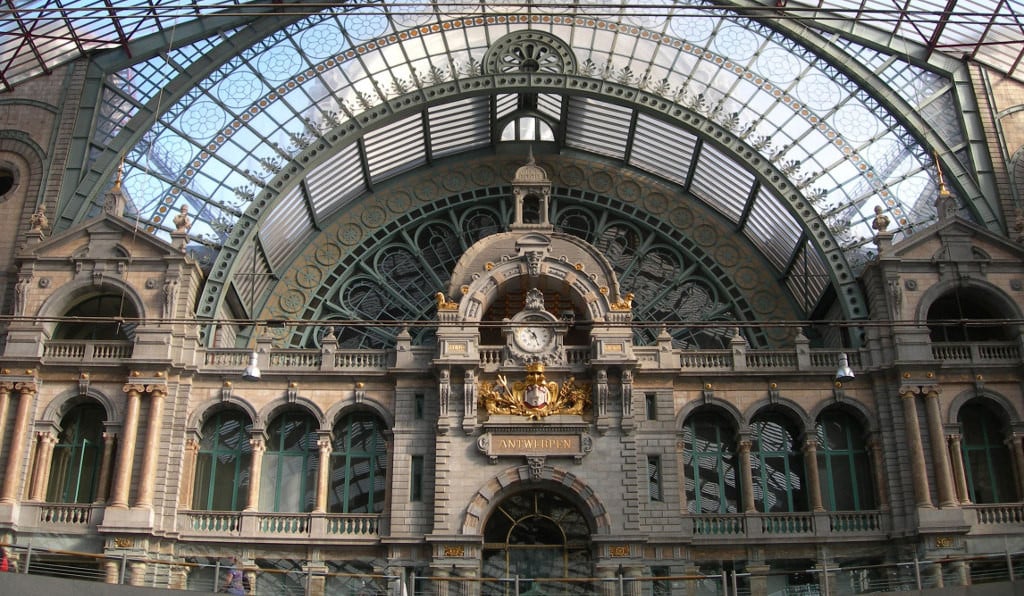
Visiting Belgium and not seeing the Diamond Center in Antwerp is akin to a crime. The World Diamond Center welcomes every traveler, quickly opening the world of wealth, luxury, and abundance before them. Finding oneself among a vast number of precious stones, one inevitably feels like an aristocrat endowed with unlimited power. The sparkling rainbow-colored stones inspire, enchant, and captivate. It is very hard to resist the temptation to touch the incredibly expensive exhibits, the likes of which do not exist anywhere else in the world!
Just think of the diamond jeans or unique replicas of the jewels owned by the British royal family. By the way, only in this museum can you see the best replica of the most famous diamond, the “Koh-i-Noor.” Treat yourself and be sure to visit the unique halls of the Diamond Museum! By the way, we highly recommend using the services of guides or at least an audio guide. In such a company, you will not get lost among the abundance of precious stones and will be able to see the best of them with your own eyes.
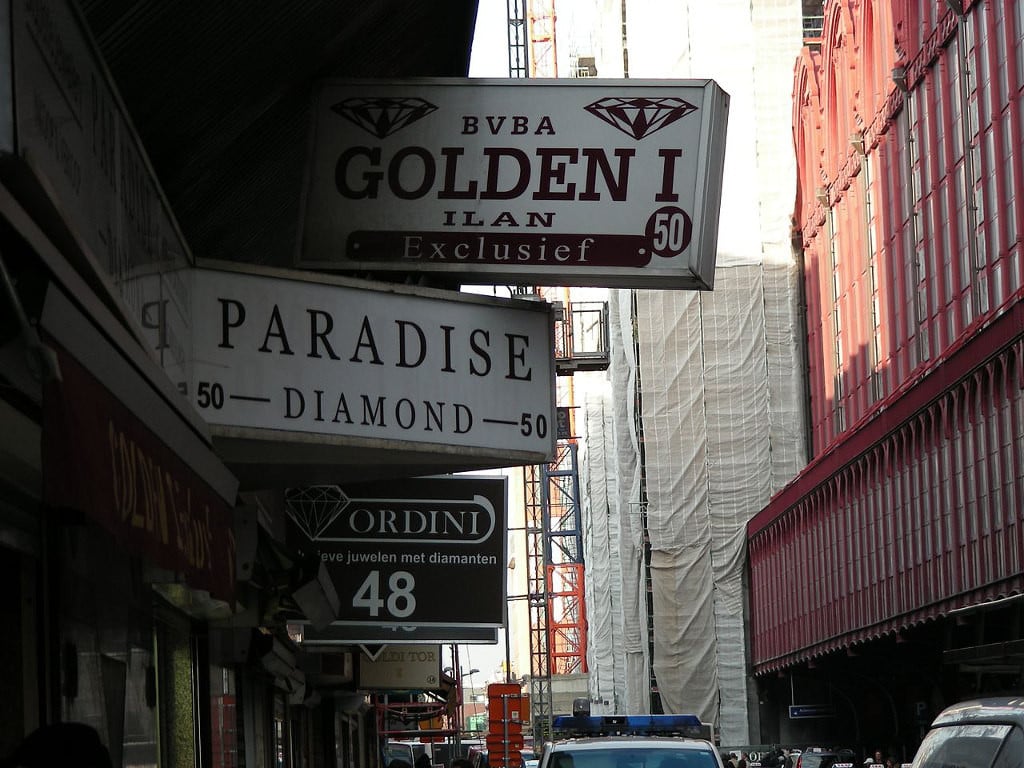
Credit must be given to the authorities. Thanks to their efforts, the museum is equipped with the latest technology, allowing even tourists with limited mobility to enjoy a full visit.
For particularly demanding visitors, the museum staff is ready to organize a real tour to find the perfect stone. However, this is only a virtual service.
Antwerp Zoo
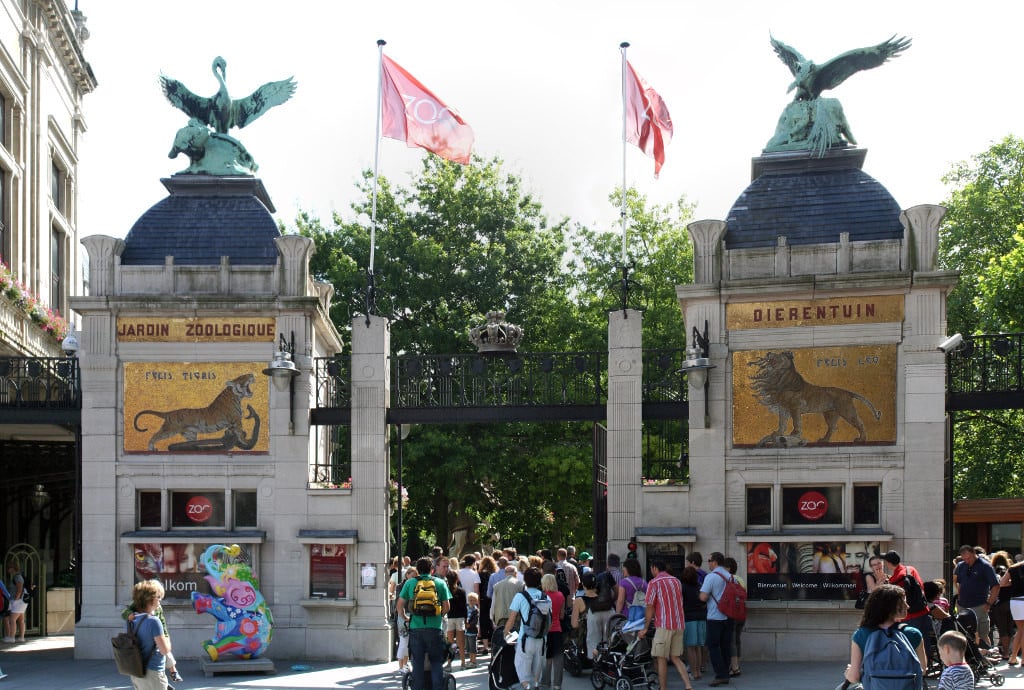
If you see an inviting sign to visit the zoo during your walk, don’t turn your nose up. Believe me, you won’t see anything like this in any other city in the world! Let’s start with the fact that Antwerp Zoo is considered one of the oldest. The first mentions of it date back to 1843. Today, it is home to about 5000 animals, many of which are on the brink of extinction. The zoo’s capacity is astonishing. Over a year, more than 1.5 million visitors come to see the wonderful inhabitants of the most beautiful and protected zoo in the world.
To further appreciate the scale of the zoo, imagine that every day the animals consume more than 50 tons of meat, 40 tons of fish, 128 tons of hay, and 70 tons of vegetables and fruits. And the number of loaves of bread consumed by the zoo’s inhabitants daily exceeds 10,000! One of the oldest zoos in the world was organized outside the city in 1843, but now it is hard to imagine because over the years, Antwerp has grown so much that the abode of animals and birds ended up in the city center. Its territory has become an oasis of wildlife amid the urban sprawl of a big city, and the zoo itself – a historical monument of the past and a favorite place of entertainment for people today.
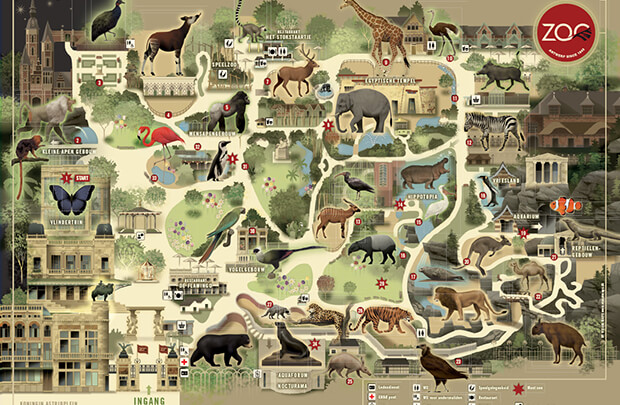
Hundreds of Antwerp residents and tourists strive to visit here, attracted by the beautiful view of the old buildings, the impressive columns of the central entrance with interesting design elements. But it is hard to convey in words how many positive emotions visitors experience when inside, where in clean, well-maintained enclosures, ponds, squares, and lawns live 5000 animals of more than 950 species! The level of animal and bird care here is so high that their wild counterparts can only envy them. African predators and primates, Australian unique creatures, and representatives of Arctic fauna live comfortably and well-fed in this zoo-land, where ideal living conditions have been created.

Giraffes, elephants, zebras, camels, rhinos, and hippos live not just anywhere but in an Egyptian temple built in 1856 specifically for these animals. The external decoration of the “temple” is indeed done in a typical ancient Egyptian style. The artistic painting, restored in 2014, looks bright and fresh, emphasizing the North African color. To navigate the large zoo area more easily, you can look at an illustrative map and determine your route, although there are direction signs everywhere on the territory.
It is so beautiful and comfortable here that many people celebrate birthdays, hold meetings, and mini-conferences in nature. The impressions of everything seen here are simply amazing, especially for children seeing exotic animals live for the first time.
Royal Museum of Fine Arts
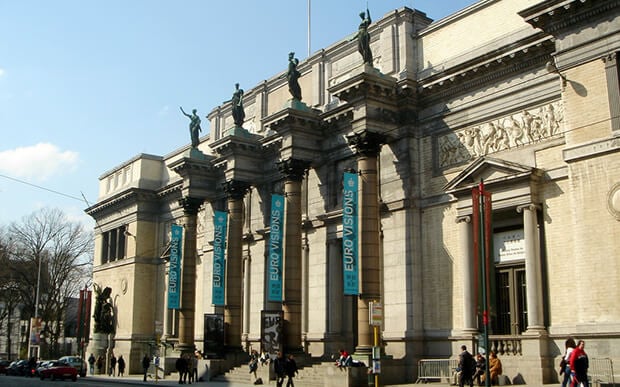
Looking at the building of unusual construction and irresistibly beautiful architecture, you immediately conclude that it is perfectly suited for its purpose – housing works of fine art. The high Corinthian columns with stucco decorations, sculptural statues on the attic, and arched window vaults make the building a magnificent example of neoclassical architecture of the late 18th century. It is not by chance that such a museum appeared in Antwerp, where the Belgian artists’ guild was very active, later growing into the Academy, which inherited the guild’s collection of art. These collections became the basis for the future Museum of Fine Arts.
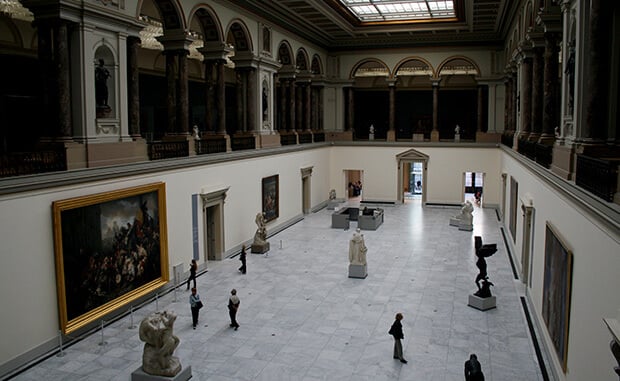
The interior layout also corresponds to its purpose: large bright halls, a wide staircase capable of accommodating a large audience and many exhibits, most of which are works of art by Belgian masters.
Works by famous Flemish and Dutch painters are presented here (in separate halls).
Mayer van den Bergh Museum
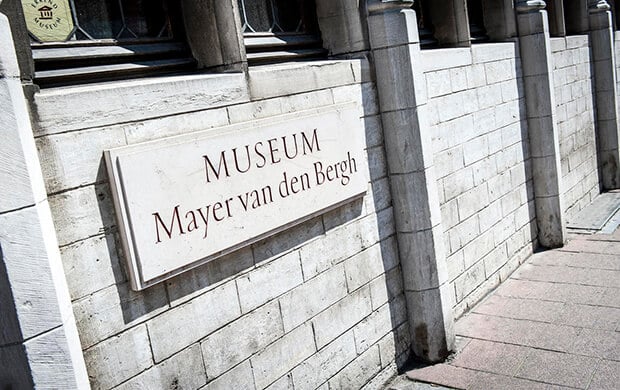
There is a place in Antwerp that, upon visiting, will transport you to the atmosphere of the 15th century. This is the Mayer van den Bergh Museum, located in a patrician house from that era, with well-preserved features such as dark oak panels, a narrow spiral staircase, and windows with multiple panes. Entering the museum, you immediately feel not the impersonal nature of the institution but a certain intimate individuality and learn that the museum collection is private, donated to the city. The arrangement and classification of the exhibits reflect the interests and preferences of the collector – Mayer van den Bergh.
The unique collection began with young Mayer’s fascination with numismatics, later growing into the collection of various art objects, both classical and applied. The museum’s exhibitions feature paintings by famous painters, sculptures made of wood, bronze, marble, and ivory; porcelain, faience items, lace, tapestries, and embroidery. In memory of her prematurely deceased son, the mother carefully preserved everything and then donated it to the city.
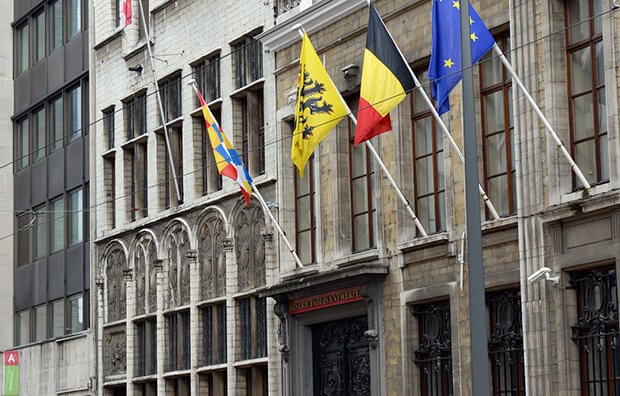
Through the unique exhibits, one can see the collector’s peculiar taste, his diverse interests, deviating from the rules of scientificness. He did not strive to maintain chronology and periodization in his collection, paying tribute to the beauty and elegance of the items. They are true treasures that delight museum visitors. Among them is an unparalleled artistic masterpiece – a triptych on the altar, created by an unknown painter: “Nativity of Christ,” “Saint Christopher,” and “Resurrection.” There is more than one such masterpiece here, so the Antwerp authorities treat van den Bergh’s priceless gift with reverence.
MAS (Museum aan de Stroom)
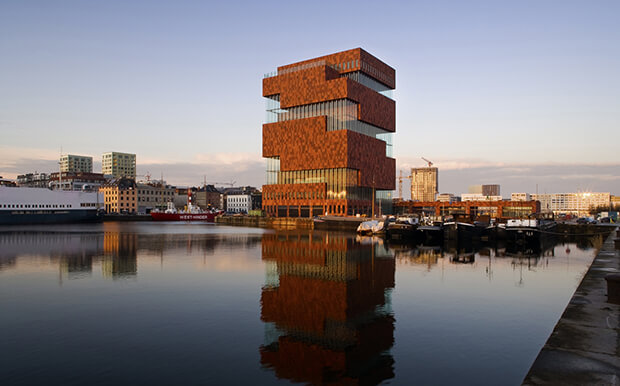
“Museum on the River” is how its name translates, because it is indeed located by the river. The bright, original architecture of the building rises above the river space like a ship’s mast. This new museum of shipping, opened in 2011, houses 6,000 thematic exhibitions. The building’s unusual configuration is the result of a winning competition project by a Dutch architectural firm, whose innovative ideas are beautifully expressed in the stunning structure. It is visible from afar, like a lighthouse, because the walls are clad in Indian red sandstone. One of the walls features a decorative embodiment of the legend of the brave warrior Brabo, who cut off the hand of the giant ruler who dominated the city, thus freeing its inhabitants from the burden of tribute. The image of the hand is a symbol of Antwerp’s victory.

The museum’s exhibitions provide visitors with a detailed introduction to the history of the Antwerp port, the city’s past, and the history of shipping. Rare exhibits illustrate the development of shipbuilding in Flanders and Antwerp’s longstanding maritime connections with all continents. Models of various sea vessels from ancient times to the present are displayed here. There are exotic exhibits – evidence of Belgium’s colonial rule over Congo. The MAS’s rich collections are astonishing in their quantity and uniqueness.
Antwerp Central Railway Station

All passengers arriving in Antwerp are greeted by a huge railway station building that resembles a luxurious Renaissance-style castle. This is the largest urban and international transportation hub. Every day, 250,000 passengers pass through the station’s portals. Several tram and bus lines of the city lead here, and ferry companies’ docks are located here, providing transport to the northern part of Antwerp.
The station building is a magnificent monument of neo-Renaissance architecture, opened in 1882. The architectural masterpiece’s external beauty is preserved in its original form. Regular reconstructions are currently underway at the station, and a grand construction project is taking place in the station square, where a new metro line is being created.
Rubens House
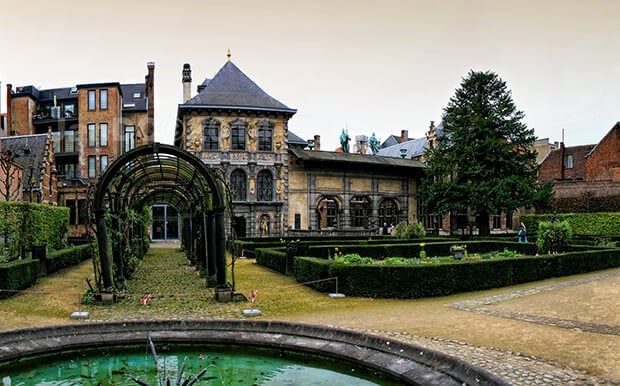
This humble name contrasts with what it implies: the Rubens House is too primitive a term for everything visitors see here. It is more like an abode of artistic creation, where every detail and item embodies the great gift of an artist from God. The masterpiece was built over seven years (1611-1618), step by step bringing the owner’s creative ideas to life, who decided to create not an ordinary dwelling but a work of art. The first guests to visit the house were amazed with admiration from the first steps to the last: everything here was incredibly beautiful and extraordinary. Among the visitors were very noble persons: dukes and queens, generals and marshals, great scientists, artists, and writers.

Rubens’ art studio was his favorite place where he created his best paintings and met with fellow artists. He loved his home unconditionally, where his children from his second marriage were born and where he lived until his last days (1640). The house’s facade faces Rubens Street, with the main part extending into the courtyard’s depth. The wing with living rooms was built in the old Flemish style, without excesses. The studio, inner courtyard portico, and garden pavilions were created in the Baroque style, with luxurious sculptural decor.
The stunning decorations made of wood, stone, and marble are mesmerizing. Credit must be given to those who restored Rubens’ creation based on his sketches and drawings, as various owners made changes to the house after his death. The Rubens House, a national treasure of Antwerp, has taken its rightful place among other museums.
Antwerp City Hall
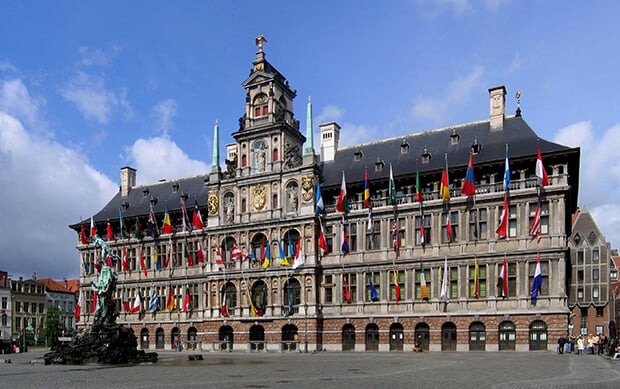
The old four-story building, which incorporated vivid features of Gothic and Renaissance architecture of the Dutch Renaissance era, attracts attention with its rather elaborate, richly decorated facade. From the beginning, it was intended to become the city hall, a project developed by the famous architect of his time, Floris, who used a synthesis of Italian Mannerism and Flemish Gothic. The result was a beautiful 16th-century architectural monument that served as the city administration’s residence for centuries. Antwerp’s undeniable achievement is the almost complete restoration of the city hall in its original form after the 1587 war fire.
Looking at the building’s interior, one would never guess that the interiors were decorated in the 19th century: everything here is expertly stylized to the medieval atmosphere: oak panels, fireplaces with luxurious decor, paintings, and frescoes with city scenes, leather furniture, and lots of gold. The city hall’s facades are extraordinarily lavishly decorated, adorned with columns, gilded noble coats of arms, royal and ducal heraldic symbols. Three statues are installed in the wall niches of the magnificent attic tower – the Virgin Mary, Justice, and Providence.

